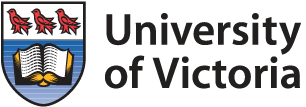In 2018, the Silent Genomes project received $10.4 million in funding from Genome Canada, Genome BC, the Canadian Institutes of Health Research, and others to reduce healthcare disparities and improve precision diagnosis for Indigenous children with genetic disease. Now, just over a year into the project, the team has laid a solid foundation for the work head.
Imagine suspecting your child has a rare genetic disease. To gain a precise diagnosis, and the tailored medical management that follows, your child needs access to advanced genomic technologies and a clinical database of genetic variations in their own population.
If you’re an Indigenous person in Canada, achieving that accurate diagnosis may be more challenging.
“There’s next to no genomic information available,” says Laurie Montour, who is Kanienke’há:ka (Mohawk) and Indigenous Community Engagement Coordinator of Silent Genomes (SG), a four-year project aiming to bridge the gap in healthcare access and improve diagnostic success for Indigenous children with genetic diseases. To accomplish this, SG aims to create an Indigenous Background Variant Library (IBVL) from a diverse group of healthy 1,500 First Nations people as a start. Understanding which genetic variations are common (i.e., background) within a population is critical in precision diagnosis; common variants, which are less likely to cause disease, can be ruled out, and the focus placed instead on rare variants.

The Silent Genomes project officially launched with the Gathering Ceremony, which was held at the BC Royal Museum on July 18-19, 2018. Photo by Lawrence Gillman
Since the project began in 2018, the SG team has been focused on laying their foundation. Activities have included Indigenous community engagement, community education, and capacity-building, as well as developing standards for Indigenous oversight of the library and the biological samples from which it will be built.
Together, these foundations help ensure a level of comfort and understanding of the project within Indigenous communities, without which the project could not move forward. “Sometimes people really don’t want to be involved with genetics care or research because they’re concerned the info could be used for different reasons—reasons they had not intended,” says SG project lead Dr. Laura Arbour, Professor of Medical Genetics at the University of British Columbia’s Island Medical Program, and Affiliate Professor with the University of Victoria’s Division of Medical Sciences.
SG has partnered with the Assembly of First Nations, First Nations Health Authority, Métis National Council, and Inuit Tapiriit Kanatami, as well as created an International Indigenous Genomics Advisory Council to advise on the creation its governance policies.
The team is also in discussions with eight First Nations communities that are part of a national cohort study addressing chronic disease. Their stored biosamples, consented for future research, could be used to generate the IBVL. (Though samples will come from a biobank, the IBVL itself will not be a biobank. Instead, it will store variant data for clinical purposes—and only if the communities are in agreement for use.) SG is engaging with each community to determine if and how the project could proceed.
While the governance policies are not yet finalized, SG has opened participant enrollment in BC (enrollment will open up elsewhere in Canada soon). In the interim, the SG team is using a “DNA-on-loan” policy. In this light, the biosamples are not seen as gifts; they are under contract, and the team can only use the biosamples for SG in the way originally agreed upon. Indigenous-stakeholders can also review any manuscripts to ensure they’re comfortable with the way the data is being used.
“We call it DNA-on-loan because it really puts the patient or the community in the driver’s seat for the way the samples and DNA are used,” says Dr. Arbour. “It keeps that mindset to say ‘I’m really the steward; I’m not the owner of this.”
“We’re paving a new way to do research and deliver genetic healthcare, especially with large genomic data sets,” adds Brittany Morgan, who is Nuu-chah-nulth and Secwepemc, and Community Engagement Coordinator of SG.
As mentioned above, another big focus of the first year has been capacity-building. This has included developing education tools for patients and communities; creating user-friendly, culturally connected consent forms, and teaching genetic counsellors at 14 sites across the country to work with Indigenous peoples in culturally safe ways. SG has also built student capacities by encouraging Indigenous grad students to work with the project and providing scholarship for Indigenous students to attend the Summer Internships for Indigenous Peoples in Genomics Canada (SING Canada).
“My head spins when I see how much we have accomplished in the last year,” says Dr. Arbour. Still, there’s a lot of work to do in the next three years.
“There is an unfortunate amount of time pressure that goes along with this project, but we knew we were trying to fit into something that is conventionally done differently than the way we do,” she says. “We have to stick to our principles to the maximum degree because we have to ensure we’re doing this in a way that’s going to be sustainable. If we rush it and don’t do it well, it’s not going to work.”
In other words, with solid foundations of strong governance, capacity building, and community engagement, SG and its reference library will help more than the 200 children who will receive their diagnosis as part of the project – they will provide advanced genomic healthcare to Indigenous communities across Canada for years to come.
